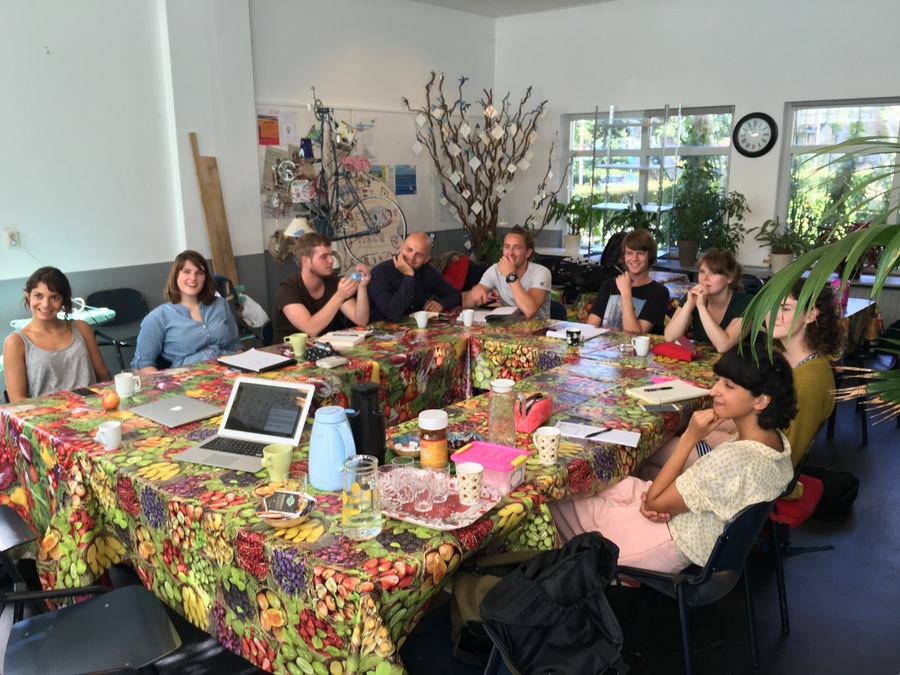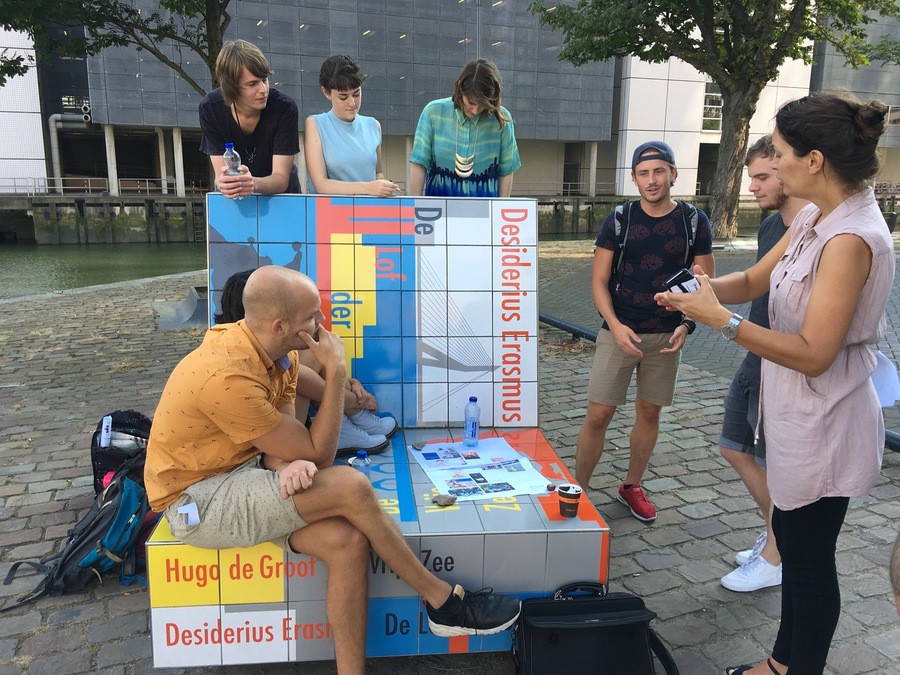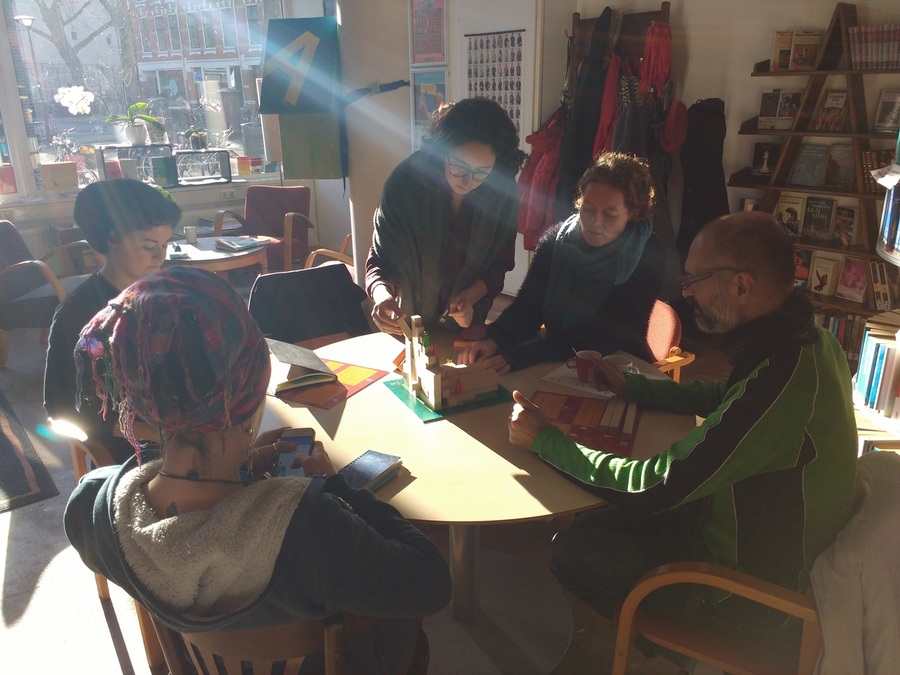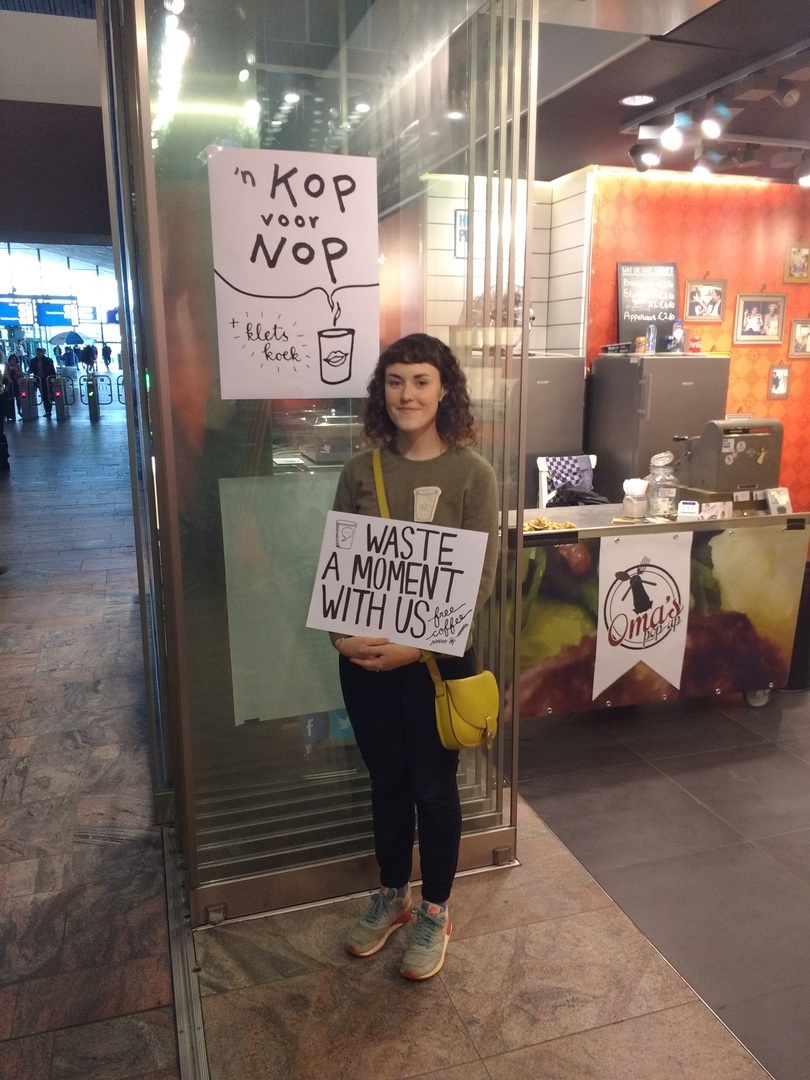Practice What You Teach
The wikipage input value is empty (e.g. SomeProperty::, [[]]) and therefore it cannot be used as a name or as part of a query condition.
By Lily Higgins and Bruno Setola
Embedded Research
Embedded research is an important part of the creative process of any social designer. But what about the idea of “embedded teaching?”. Embedded teaching would mean that teachers take an active, engaged role in the context their students are working in, acting as a bridge of trust between them and the context by building long-term relationships with local leaders over multiple school-years. Creating social projects within the constraints of the “Quarter” system means that building credible bonds of trust with a neighbourhood or group of people becomes a nearly impossible expectation for students (especially international, non-Dutch speaking ones). Starting in an unfamiliar context as an outsider with the title “Student” is a recipe for not being taken seriously, and to subsequently spend the short weeks of the project solely trying to find something or someone to expedite the process of becoming an insider. We use high-level social design terminology in the classroom and show examples of social-design professionals, but how can we create a realistic way for 2nd, 3rd, and 4th year students to simply get started?
- Excerpt from article on Sustainability: Sometimes teachers can get overwhelmed and discouraged; the systemic approach risks making a educational programme more abstract which makes it more difficult to offer guidance. Therefore it is important they link newly required knowledge back to the reality of everyday teaching, to apply it to a class'.
One approach is to be a teacher who is already personally embedded in the context that their students are working in. New students will transition in and out of this context every few months, but the bridge of trust built by the teacher will remain. When a teacher demonstrates that they are personally invested in the design-context, students are encouraged to seek their own connections and create more meaningful work.
Safety
It is the role of the teacher to create a safe environment in which to learn, grow, and fail; if that is not the goal, then it cannot be considered school. Then it’s just “the real world”. Even though an essential part of the Social Practices is to work in real contexts, by definition, it is not the same. School should offer a safe learning environment. It is a place for students to experiment without the fear of losing jobs or other consequences that could cause real damage in the real-world.
This safety net gives young social designers the chance to come face-to-face with real-world problems, develop real creative interventions in them, and come into contact with the real ethics that arise as a result of their work; without their missteps or failed experiments leading to repercussions. If this safety net is not firmly in place, then why bother going to school at all? Just go out on your own and start messing around in other people’s neighbourhoods. In order to set students up for meaningful learning experiences, it is critical that teachers provide the bridge and safety net needed for students to get straight to the heart of being able to apply their theoretical social design knowledge.
Intrinsic Motivation
We believe that the essence of the social practices should be taught in a way that triggers, promotes, and supports the intrinsic motivation of students. This would mean that teachers should initially frame projects as a way to extrinsically motivate students; build a bridge to a real-life context and present a clearly defined challenge within that context that should be explored. Some students will be happy to complete the assignment as the teacher originally laid-out, but some will discover something on the way that strikes their intrinsic motivation. In other words, we propose to use the initial challenge as an open scaffolding to allow for a student to discover his or her intrinsic motivation.
- Excerpt from article on Gamification: With Gamification we seek to empower (underprivileged) students to understand, challenge and change the rules that govern their education and way of learning through play. We encourage our teachers and students to adopt a playful attitude in order to get back in touch with what intrinsically motivates them in learning. It is the 'experience' and, most importantly, the reflection on this experience that is at the heart of our didactics. This enables a change in mindset, awareness and behaviour.
- Excerpt from article on Open Design: Designing a curriculum for ‘openness’, participation or teacher appropriation opens up questions regarding WdKA’s ‘signature’ and the space for experimentation. Designing a curriculum for this kind of uncertainty is often associated with giving up control. Within this context, and because the WdKA hires professionals (rather than social workers or administrators), we explicitly investigate the often overlooked didactic perspective. The programme’s questions include: what is openness in didactics? Can an open lesson or learning process leave room for expression by both teacher and student? What are didactic participatory strategies within the context of sharing, participation and iteration?
As long as the newly defined challenge of the student fits the generic learning goals that the tutor has defined, we should give “right of way” to any alternate challenge that emerges and be willing to toss the original practical constraints aside, as they served their purpose of sparking independently-motivated learning! Supporting a student beyond the boundaries of the assignment is therefore the second ‘bridge’ a teacher is responsible for building; the one that gives a student pursuing their own path the same level of guidance, support, and valuable connections within a context as those who followed the original project guidelines. The role of the teacher is not to uphold constraints, it is to create an environment where many different types of students can thrive, whether they play by the “rules” or not.
Off-road Learning
A small anecdote by Bruno: ‘This year in the Gamification Minor, there was a group of students who got stuck on their project in the middle of the semester and came to me with the concern that they wouldn’t be able to produce a finished game by the deadline we set with the client. I saw they they were motivated, but that the “rules” of the project brief were keeping them from moving forward. They were struggling to find a connection to the neighbourhood they were assigned to work with and the fear of not developing a finished game within that context froze their process. When I realised this, I told them that it was okay to see the project guidelines as flexible and that it was okay if they didn’t end up developing a finished game. As long as they were able to show me what they had learned in the end, I promised I would not fail them for this. As soon as they understood this, their creative process gained speed again and they pursued their interests through intrinsic motivation. In the end, they did design a game that was directly aligned with the needs of the client and the neighbourhood in question. Furthermore, the game was rigorously tested to prove it’s playability. All because they stopped following the briefing, and started following their gut.’
So, are teachers willing to let students go ‘off-road’? And more importantly, are they willing to go off-road with them? Going off-road together creates the ideal conditions to establish a Learning Community, where teachers and students abandon the traditional didactic hierarchy to exchange insights and experiences from their own design practices. Teachers in the Social Practice are then expected to practice improvisational approaches in order to guide students through unexpected challenges that might be unfamiliar to all involved. Are teachers willing to put aside their didactic egos and admit what they don’t know, while taking an active role to learn along the way?
- Excerpt from article on Cultural Diversity: What we at the WdKA call Social Practices is far removed from the isolation and independence of the lecturer’s classroom. When guiding students in an embedded way, you encounter ungovernable contexts with unpredictable dynamics: students who won't open up, who don't stick to agreements, who don't respond the way you expected, who suddenly become angry, fearful or extremely intimate – in short: when working in an embedded way, you become part of something you cannot control – and our challenge at the WdKA is to teach teachers to creatively position themselves in this chaos.
The nature of the pioneer is to venture into the place of not-knowing and to react intuitively on what they encounter. We want to invite teachers of the Social Practices to venture beyond their known-places, as we have come to believe one must be a pioneer in order to ‘create’, guide, support, and spark the pioneer within others.
If you'd like to join the discussion, leave your thoughts on the talk page.Links
CONTRIBUTE
Feel free to contribute to Beyond Social.













